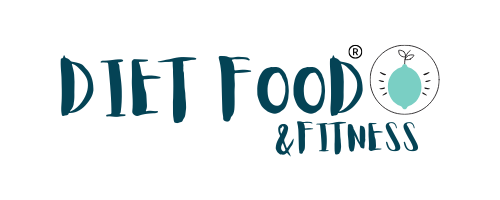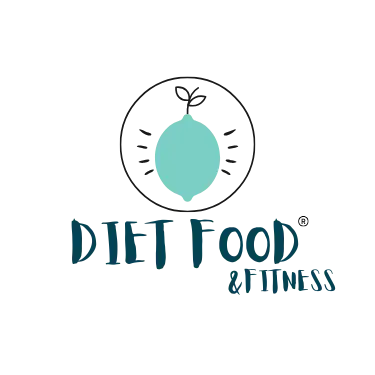The Oatmeal Diet: Can You Really Lose 20 Pounds in 14 Days?
Let’s be honest – when we see claims like “Lose 20 pounds in just 2 weeks!” our inner skeptic wakes up, but so does our hopeful optimist. The Oatmeal Diet has been making these bold promises across social media and diet forums, presenting itself as a simple, inexpensive solution for rapid weight loss.
At its core, this diet involves making oatmeal – yes, that humble breakfast staple – the star of every meal for a short but intense period. Proponents swear by its ability to melt away pounds quickly, pointing to oatmeal’s famous fiber content and ability to keep you full.
But here’s what they’re not shouting about: that 20-pound claim is likely more water weight and temporary loss than sustainable fat burning. And while oatmeal is absolutely a nutritional powerhouse (packed with fiber, vitamins, and slow-digesting carbs), any diet that severely restricts variety raises some red flags.
Because when it comes to weight loss, if it sounds too good to be true… well, you know the rest. Let’s separate the facts from the fantasy.
Decoding the Diet: What Does It Actually Involve?
So, how does this Oatmeal Diet actually work? Is it just eating bowl after bowl of plain oats like some kind of culinary punishment? Thankfully, no—most versions have some structure and flexibility. Let’s break it down.
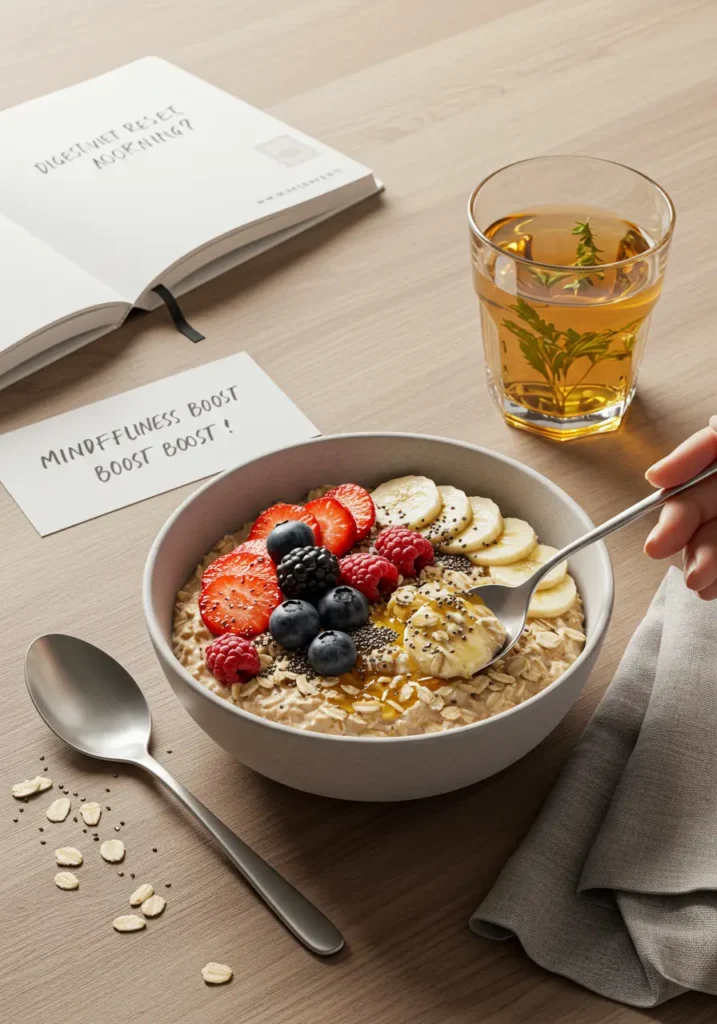
The Basic Rules:
✅ Oatmeal is the main event – Typically 2-3 meals per day (usually breakfast and lunch).
✅ Plain is preferred – Steel-cut or rolled oats > instant packets (which often have added sugar).
✅ Limited additions – Some versions allow fruit, nuts, or spices (cinnamon, vanilla) for flavor.
✅ Dinner gets a little freedom – Often includes lean protein (chicken, fish) and veggies.
What You Can (and Can’t) Eat:
✔ Allowed:
- Oats (obviously)
- Berries, apples, bananas (in small amounts)
- Unsweetened almond milk or skim milk
- Nuts/seeds (chia, flax, almonds—but sparingly)
- Non-starchy veggies (spinach, broccoli, zucchini)
- Lean proteins (chicken breast, tofu, egg whites)
❌ Restricted:
- Added sugars (bye, maple syrup)
- Processed foods (no bread, pasta, or snacks)
- High-fat dairy (whole milk, cheese, butter)
- Fried foods, alcohol, and sugary drinks
The Phases (Because of Course There Are Phases):
1️⃣ Phase 1 (Days 1-3): Oatmeal-Only Bootcamp
- Just oats, water, and maybe cinnamon. Brutal? Maybe. Effective for quick water loss? Sure.
2️⃣ Phase 2 (Days 4-14): Oatmeal Plus
- Adds fruits, veggies, and small portions of protein.
3️⃣ Phase 3 (After 14 Days): Maintenance Mode
- Oatmeal for 1-2 meals, then balanced eating for the rest.
The Fine Print:
- Water is mandatory – At least 8 glasses a day to help with digestion and fullness.
- Portions matter – Even healthy toppings can add up (looking at you, almond butter).
- Exercise? Optional but encouraged – Light walking or yoga is usually recommended.
So, is this sustainable? For 14 days? Maybe. For life? Hard no. But let’s talk about why oatmeal can help with weight loss next…
The “Science” Behind the Claims: Why Oatmeal Can Help with Weight Loss
Let’s get one thing straight – oatmeal isn’t some magical weight loss potion. But there are legitimate reasons why making it a dietary staple might help shed pounds. Here’s what the research actually shows:
Fiber: The Secret Weapon
Oatmeal is loaded with beta-glucan, a powerful soluble fiber that:
- Forms a gel-like substance in your gut, slowing digestion
- Keeps you feeling full for hours (bye-bye, 11am snack attacks)
- Helps stabilize blood sugar levels, preventing energy crashes
A study in Nutrition Journal found that people who ate oatmeal for breakfast felt fuller and ate fewer calories at lunch compared to those who had cornflakes.
Nutrient Density vs. Empty Calories
Compared to typical breakfast choices (looking at you, pastries and sugary cereals), a bowl of plain oatmeal provides:
✔ 4-5g of fiber
✔ 5-6g of protein
✔ Essential nutrients like manganese, phosphorus, and B vitamins
…all for just about 150 calories per serving.
The Calorie Math
When you replace a 500-calorie egg-cheese bagel with a 150-calorie bowl of oats, you’re automatically creating a 350-calorie deficit – and that adds up over time.
But here’s the catch: This only works if you don’t drown your oats in sugar, honey, or excessive toppings. A “healthy” oatmeal bowl with 2 tbsp brown sugar, raisins, and walnuts can easily hit 400+ calories.
The Fullness Factor
Oatmeal scores high on the satiety index, a measure of how filling foods are. The combination of fiber, protein, and slow-digesting carbs makes it more satisfying than many other breakfast options.
Important note: While oatmeal can be a helpful tool, no single food guarantees weight loss. Total calorie intake, activity level, and overall diet quality matter far more than any “miracle” food.
The 20 Pounds in 14 Days Question: Let’s Get Real
Let’s address the elephant in the room: Does the Oatmeal Diet actually deliver on its dramatic weight loss promise? The short answer? Probably not in the way you’re hoping. Here’s why:
1. Rapid Weight Loss ≠ Fat Loss
That initial “whoosh” of weight loss? Mostly water and glycogen (stored carbs), not pure fat. When you drastically cut calories (as this diet does), your body sheds water first. 1-2 pounds per week is considered safe, sustainable fat loss—anything more is likely temporary.
2. Muscle Loss is a Real Risk
Extreme calorie restriction (like eating only oatmeal for days) forces your body to break down muscle for energy, not just fat. Less muscle = slower metabolism = harder long-term weight management.
3. The Starvation Mode Problem
Your body is smart. When you slash calories too hard, it slows your metabolism to conserve energy. This means:
- Initial weight loss may stall quickly
- You’ll likely regain the weight (plus more) when you resume normal eating
4. Lack of Scientific Backing
There are zero credible studies proving the Oatmeal Diet leads to 20 pounds of fat loss in 14 days. Research does support oatmeal as part of a balanced diet for gradual weight loss—but not as a crash-diet miracle.
5. Nutritional Deficiencies
Oatmeal is healthy, but it’s not nutritionally complete. Missing out on:
- Sufficient protein → muscle loss, weak immunity
- Healthy fats → hormone disruption, dry skin
- Micronutrients → fatigue, cravings
The Bottom Line?
You might lose 5-10 pounds of water weight in 14 days, but:
- It won’t all be fat
- It won’t last unless you make permanent changes
- It could backfire by wrecking your metabolism
Discover : Healthy Honey Chipotle Chicken Rice Bowls: Smoky, Sweet & Satisfying!
Potential Perks of the Oatmeal Diet (Beyond the Hype)
While we’ve busted the 20-pound myth, let’s talk about what this diet DOES do well when approached sensibly:
The Simplicity Factor
There’s something appealing about not overthinking meals – just grab a bowl of oats and go. For chronic dieters paralyzed by endless food choices, this structure can provide mental relief.
Budget-Friendly Nutrition
At about $0.15 per serving, oatmeal gives you serious bang for your nutritional buck compared to most “diet” foods.
Digestive Reset
That high fiber content acts like a broom for your gut. Many report improved regularity and less bloating after a few days.
Sugar Detox Effect
By eliminating processed sweets, some experience:
- Reduced cravings
- More stable energy
- Heightened taste sensitivity to natural sugars
Mindfulness Boost
Eating the same basic food repeatedly makes you more aware of:
- True hunger signals
- Emotional eating triggers
- Portion control
Healthy Habit Foundation
Used as a short-term reset (not a long-term solution), it can help transition to more balanced eating patterns.
Important Note: These benefits only apply if you:
- Don’t extend the diet beyond 2 weeks
- Stay hydrated
- Listen to your body’s signals
- Transition properly afterward
The real value isn’t in dramatic weight loss, but in using oatmeal as a tool to pause unhealthy eating cycles. When approached this way, it can be a helpful stepping stone – just not a magic solution.
The Not-So-Sweet Side: Potential Downsides and Risks
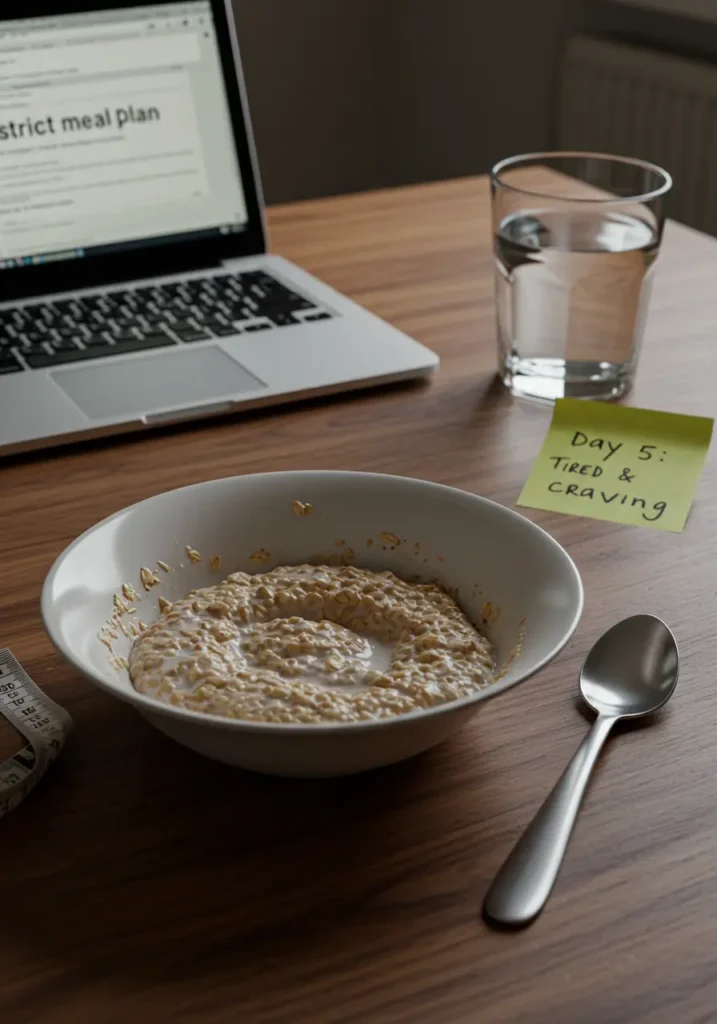
Before you dive spoon-first into an oat-filled weight loss journey, let’s talk about the very real drawbacks of this restrictive approach:
1. Nutrient Deficits = Fatigue & Cravings
Oatmeal is nutritious, but it’s not a complete meal. Missing out on:
- Enough protein → muscle loss, constant hunger
- Healthy fats → dry skin, hormone imbalances
- Key vitamins (like B12, iron) → energy crashes, brain fog
2. Metabolic Slowdown
Severely slashing calories tells your body: “Famine alert!” → Your metabolism downshifts to conserve energy. Result? The scale stalls fast, and weight rebounds harder when you stop.
3. The Boredom Factor
Let’s be real—eating oats for every meal gets old fast. Diet fatigue sets in, leading to:
- Intense cravings (hello, midnight pizza binges)
- Quitting altogether (85% of extreme diets fail within weeks)
4. Digestive Drama
Too much fiber too fast = bloating, gas, or constipation—especially if you’re not drinking enough water.
5. Social & Lifestyle Strain
- Restaurants? Nearly impossible.
- Family dinners? Awkward.
- Energy for workouts? Zilch.
6. Psychological Toll
Labeling foods as “allowed” or “forbidden” can trigger:
- Guilt cycles if you “cheat”
- Disordered eating patterns in susceptible people
The Verdict?
Short-term oat-based resets might work for some, but the risks often outweigh rewards. A better approach? Use oatmeal as part of a balanced diet—not the entire plan.
Making Oatmeal a Healthy Part of Your Weight Management Journey
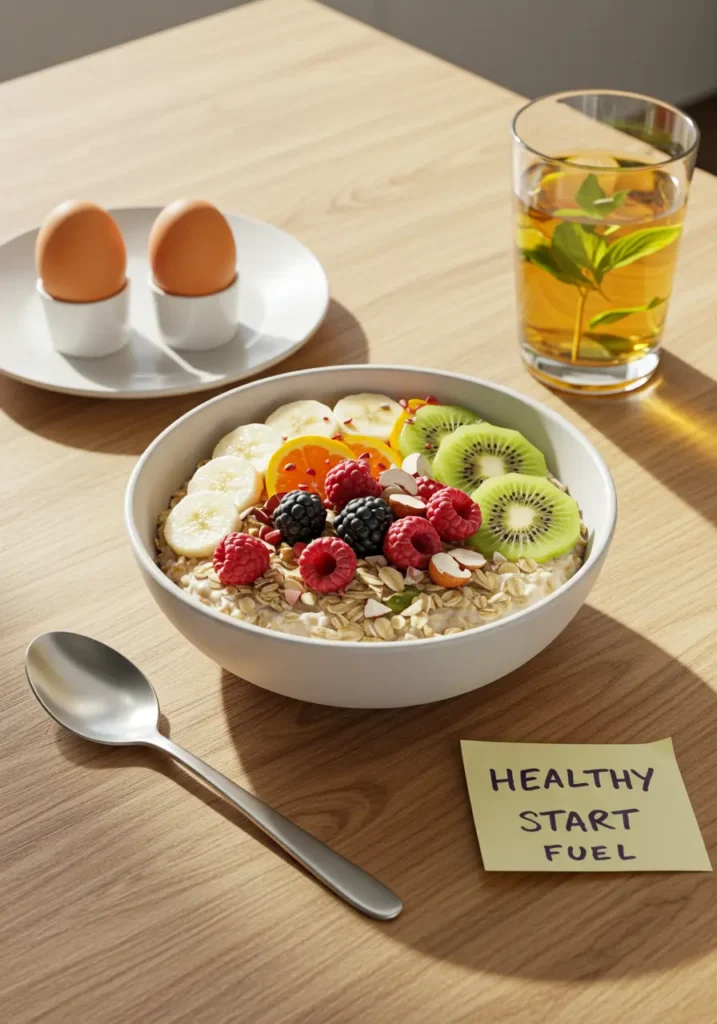
Let’s shift gears from extreme dieting to sustainable strategy. Here’s how to harness oatmeal’s benefits without the deprivation:
1. The Balanced Bowl Formula
Transform basic oats into a nutrient-packed meal with:
- Protein: Greek yogurt, egg whites, or protein powder
- Healthy fats: Almond butter, chia seeds, or flaxseeds
- Fiber boost: Berries, apple slices, or pumpkin puree
- Flavor without sugar: Cinnamon, vanilla extract, or cocoa powder
Example:
½ cup oats + 1 scoop vanilla protein powder + 1 tbsp almond butter + ¼ cup blueberries = 300 calories, 20g protein, 8g fiber
2. Smart Timing
- Breakfast: Keeps you full for hours (thanks to fiber + protein combo)
- Pre-workout: Easy-to-digest carbs for energy (add banana for fuel)
- Post-workout: Pair with protein to repair muscles (try oats + cottage cheese)
3. Beyond Breakfast
Oats aren’t just for bowls! Try:
- Savory oatmeal: Top with sautéed veggies, fried egg, and hot sauce
- Oat flour: Use in pancakes, muffins, or meatballs
- Overnight oats: No-cook option for busy mornings
4. Portion Control
A serving = ½ cup dry oats (~150 calories). Overdo it, and calories add up fast!
5. The 80/20 Rule
- 80% of the time: Nutrient-dense oatmeal bowls
- 20% of the time: Enjoy your favorite foods guilt-free (because life needs balance!)
Important Considerations Before You Try It (Or Any Rapid Weight Loss Plan!)
Before jumping into any restrictive diet—including the Oatmeal Diet—there are crucial factors to weigh. Your health is worth more than a quick fix!
1. Listen to Your Body
- Hunger cues matter: If you’re constantly starving, dizzy, or fatigued, your body is signaling that this plan isn’t sustainable.
- Energy levels: Extreme calorie cuts can leave you feeling drained—especially if you’re active.
- Digestive changes: Sudden high-fiber intake can cause bloating or discomfort. Adjust gradually!
2. Consult a Professional
- Talk to a doctor or dietitian before starting, especially if you have:
- Diabetes
- Thyroid issues
- A history of disordered eating
- Personalized advice beats generic diet plans every time.
3. Sustainability > Speed
- Short-term diets = short-term results. If you can’t see yourself eating this way long-term, the weight will likely return.
- Focus on habits, not just weight loss: hydration, balanced meals, and mindful eating.
4. Mental Health Check
- Does this diet make you obsessive? If tracking every oat feels stressful, it’s not worth it.
- Flexibility is key. Life includes birthdays, vacations, and spontaneity—your diet should too.
5. Exit Strategy
- Gradually reintroduce foods after the diet to avoid shocking your system.
- Monitor how you feel as you add back proteins, fats, and other carbs.
The Oatmeal Diet might offer a short-term reset, but long-term health comes from balance, not restriction. If you try it, do so mindfully—and always prioritize nourishment over numbers on the scale.
The Bottom Line: Oatmeal is Great, But Magic Weight Loss? Not So Much
Let’s cut through the noise with some real talk about the Oatmeal Diet:
The Truth About That 20-Pound Promise
That dramatic claim? It’s:
🔴 Mostly water weight (not fat loss)
🔴 Not sustainable long-term
🔴 Potentially unhealthy if taken to extremes
What Oatmeal DOES Do Well
As part of balanced eating, oatmeal:
✅ Keeps you full longer than processed breakfast foods
✅ Provides steady energy (no mid-morning crashes)
✅ Supports heart and gut health through fiber
What Oatmeal WON’T Do
❌ Replace the need for protein, healthy fats and vegetable variety
❌ Outsmart basic calorie math (you still need a deficit to lose fat)
❌ Compensate for other unhealthy habits
A Smarter Approach
Instead of an all-oatmeal crash diet:
- Use oatmeal as one component of varied meals
- Combine with protein (eggs, Greek yogurt) and healthy fats (nuts, seeds)
- Focus on long-term habits you can maintain
Oatmeal is a nutritional superstar, but no single food guarantees weight loss. For lasting results, skip the gimmicks and build sustainable eating patterns that include – but don’t revolve around – oats.
Want help creating a balanced meal plan that includes oatmeal the smart way? Drop your questions below!
Your Oatmeal Questions Answered: FAQ
Got burning questions about the Oatmeal Diet? I’ve got real, no-BS answers for you.
1. “Can I exercise while on this diet?”
Yes, but adjust expectations. Light activity (walking, yoga) is fine, but intense workouts may leave you drained due to lower calorie intake. Listen to your body—if you feel weak, scale back or add more protein.
2. “What kind of oatmeal is best?”
Steel-cut or rolled oats > instant packets. Less processed = more fiber, less sugar. Avoid flavored instant oats—they’re often loaded with sugar and artificial additives.
3. “Can I add sweeteners or flavors?”
Smart swaps > sugar bombs:
✔ Cinnamon, vanilla, cocoa powder (zero calories, big flavor)
✔ Mashed banana or berries (natural sweetness + nutrients)
✔ 1 tsp honey or maple syrup (if you must sweeten)
🚫 Avoid: Brown sugar, flavored syrups, or endless toppings that turn a healthy bowl into dessert.
4. “What if I get bored of plain oatmeal?”
Mix it up! Try:
- Savory oats (with eggs, avocado, and hot sauce)
- Oatmeal smoothies (blend oats into your shake)
- Baked oatmeal cups (like muffins, but healthier)
5. “How do I transition off the diet?”
Gradually! Don’t shock your system with a pizza binge.
- Week 1: Add back lean proteins (chicken, fish) and healthy fats (avocado, nuts).
- Week 2: Reintroduce whole grains (quinoa, brown rice) and more veggies.
- Long-term: Keep oatmeal as part of your diet, not the entire diet.
6. “Will the weight stay off?”
Only if you shift to sustainable habits. Crash diets = temporary results. For lasting change:
✔ Eat balanced meals (protein + fiber + healthy fats)
✔ Stay active (find workouts you enjoy)
✔ Allow flexibility (no food is “off-limits”)
Still have questions? Drop them below—I’ll answer every one!
